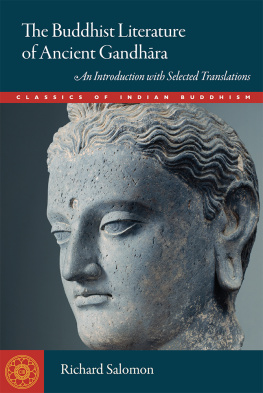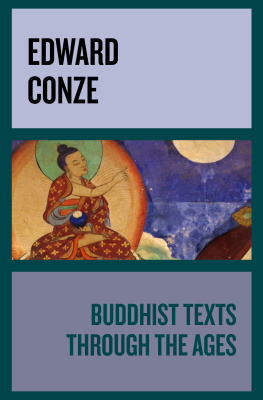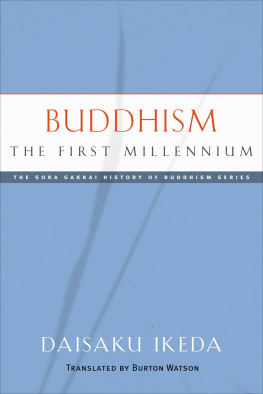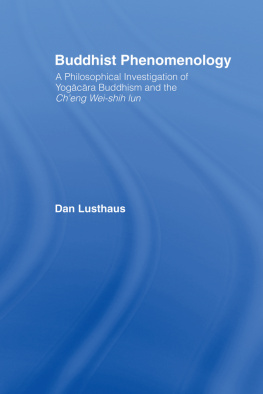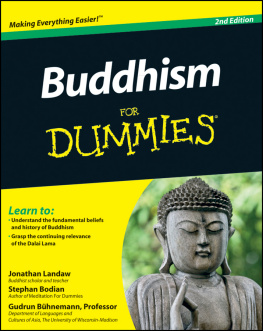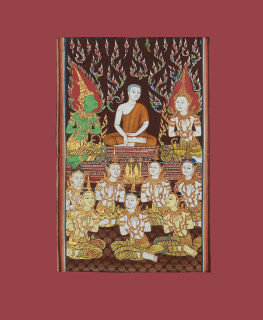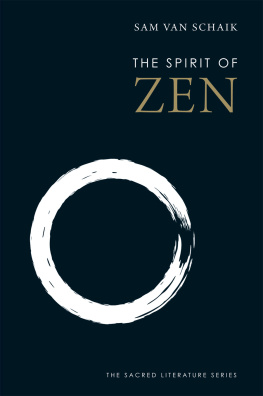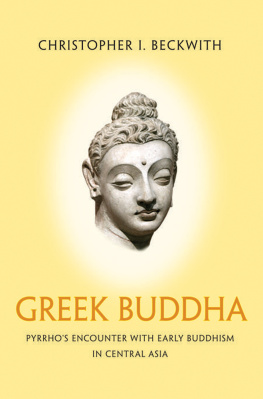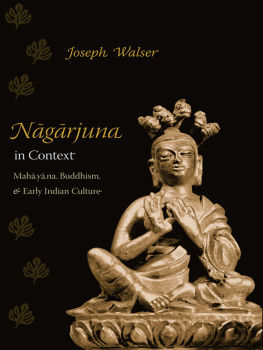CLASSICS OF INDIAN BUDDHISM
The flourishing of Buddhism in South Asia during the first millennium of the Common Era produced many texts that deserve a place among the classics of world literature. Exploring the full extent of the human condition and the limits of language and reason, these texts have the power to edify and entertain a wide variety of readers. The Classics of Indian Buddhism series aims to publish widely accessible translations of important texts from the Buddhist traditions of South Asia, with special consideration given to works foundational for the Mahyna.
Editorial Board
Andy Rotman (chair), Smith College
Paul Harrison, Stanford University
Jens-Uwe Hartmann, University of Munich
Sara McClintock, Emory University
Parimal Patil, Harvard University
Akira Sait, University of Tokyo

D iscover the fascinating story of a long-hidden Buddhist culture at a historic crossroads.
FOLLOWING ALEXANDER THE GREATS conquest of the East, a series of empires rose up along the Silk Road. In the region called Gandhra, in what is now northern Pakistan, new kingdoms flourished and became increasingly important centers for the development of Buddhism, reaching their apex under King Kanika of the Kuas in the second century CE. Gandhra has long been known for its Greek- Indian synthesis in architecture and statuary, but until about twenty years ago, almost nothing was known of its literature. Manuscripts unearthed during the last few decades show that Gandhra was a vital link in the early development of Buddhism, crucial to both the rise of the Mahyna tradition and the transmission of Buddhism to China. The Buddhist Literature of Ancient Gandhra surveys what we know about Gandhra and its Buddhism, and it also provides translations of a dozen different short texts, from similes and stories to treatises on time and reality.
In this remarkable book Richard Salomon makes accessible to general readers and specialists alike the fruits of more than two decades of study. This is a stunning achievement, giving the reader a glimpse of a lost world of Buddhist thought and practice. It belongs on the bookshelf of every reader interested in the history of Buddhism.
Jan Nattier, author of A Guide to the Earliest Chinese Buddhist Translations
This book opens a window on an early phase of Buddhist literary history that only a century ago seemed lost forever. It is a testament to the indefatigable efforts of a small band of scholars, led by Richard Salomon himself, who have toiled to make this precious material accessible to us.
Bhikkhu Bodhi, author of In the Buddhas Words
With a detectives eye and a storytellers pen, Professor Salomon shares a scholars delight in these Silk Road texts.
Hozan Alan Senauke, Berkeley Zen Center
Reveals not only the significance but also the beauty of this literature.
Ingo Strauch, University of Lausanne
This book is dedicated to the memory of Carol Goldberg Salomon
(July 28, 1948March 13, 2009)
Publishers Acknowledgment
The publisher gratefully acknowledges the generous help of the Hershey Family Foundation in sponsoring the production of this book.
List of Illustrations
Figures
Maps
Preface
T HIS BOOK IS a distillation of the results of twenty years of concentrated work by my many collaborators and me on the Gandhran Buddhist manuscripts that were discovered during that period. These manuscripts and fragments, which now number in the hundreds, date from the early centuries before and after the beginning of the Common Era. Written in the Gndhr language in Kharoh script, they have brought to light the previously unknown literature of Gandhra, a major center of early Buddhism in the northwestern frontier of the Indian subcontinent. Gandhra had previously been familiar mainly from archaeological remains, especially its world-renowned tradition of sculpture.
Until now, our findings have been published mostly in scholarly books and articles designed for an audience of specialists in academic Buddhist studies and Indian linguistics. A preliminary book, Ancient Buddhist Scrolls from Gandhra: The British Library Kharoh Fragments (Salomon 1999), introduced the first group of Gandhran manuscripts to be discovered in a semi-technical format, while scholarly editions and translations of individual manuscripts from this and other collections have been published by the University of Washington Press in the volumes of the Gandhran Buddhist Texts (GBT) series. These books are not intended for general readers. They are meant to enable those who work with Buddhist literature in more widely known languages such as Sanskrit and Pali to understand the Gndhr texts.
But almost from the very beginning of this project, I have also been aware of our obligation to avoid burying these discoveries in technical publications for specialists and to meet what I consider a scholars duty to present new knowledge to interested readers in an accessible format. This book is an attempt to meet that obligation by making the newly found Buddhist literature of ancient Gandhra accessible to a wider audience, be they students of Buddhism or readers with a general interest in ancient religions, languages, or literature.
In addition to translating and explaining the contents of the manuscripts themselves, I have tried to give the reader some sense of the scholars agonies and ecstasies involved in studying fragmentary, decrepit manuscripts that have lain unread for nearly two millennia. Each of these translations is a distillation of countless hours of labor by one or, more often, several scholars. In some places, I have presented a degree of technical explanation of the methods and techniques of decipherment to give the reader a sense of not only what has been done but also how and why.
The texts presented here were selected on a variety of criteria. First, an attempt has been made to sample each of the main genres of Buddhist texts now known in the Gndhr language. These are grouped together under five main rubrics: prose stras, poetry, legends and stories about previous lives, scholarly treatises, and Mahyna literature. Within these categories, the specific texts were chosen on the basis of factors such as the amount of material preserved in the fragments, legibility and accessibility, and overall interest and significance. Most of the texts have either been previously published in scholarly editions or at least studied in detail by my colleagues and myself, though not yet fully published. Some of the texts (nos. 13, 56, 8, 12) are presented in full; these are generally the shorter and/or better-preserved specimens. The rest are representative selections from longer texts, most of them not previously published. From these, I have chosen passages that are relatively comprehensible, interesting, and representative of the text as a whole.
Readers will notice, and perhaps be surprised, that in many cases the introductory material and commentary is longer sometimes much longer than the translated text itself. This is a product of the special character of this literature. Nearly all of the texts are incomplete, and in many cases only a small fraction of the entire work survives. I have therefore tried to make up the deficiencies in the surviving material by explaining in some detail their meaning, their context within Buddhism in Gandhra and beyond, and especially their relationships with parallel or similar texts in other Buddhist languages and traditions that help to clarify their meaning and importance. I hope that in doing so I will be contributing to, rather than distracting from, the readers understanding and appreciation of the texts themselves.
Next page
